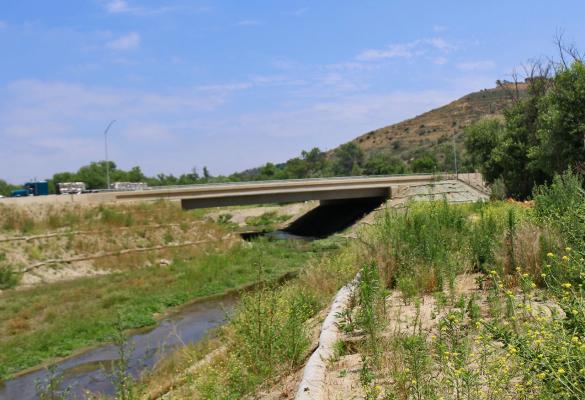Wildlife Road Crossing Structures
Wildlife road crossing structures (WRCSs) are infrastructure built with the joint goals of increasing habitat connectivity across roads and reducing wildlife–vehicle collisions. These structures can take many forms and are sited and designed differently depending on the type of wildlife present in the nearby ecosystem (FHWA 2011). Different forms of WRCSs fall along a continuum of gray to green infrastructure; all include some form of gray infrastructure, but most also use natural infrastructure (FHWA 2011). Roads are direct threats to wildlife because of the potential for wildlife–vehicle collisions that cause individual mortalities, but also because roads fragment wildlife habitat and can limit natural wildlife movement patterns throughout a landscape (Bissonette and Cramer, 2008). Wildlife–vehicle collisions can result in both personal injury and property damage (Huijser et al. 2007). WRCSs are therefore installed to protect human life and property and maintain healthy wildlife populations.

Case Studies
Oracle Road Wildlife Crossings: Promoting Habitat Connectivity
Pronghorn-Friendly Fence Modifications in West Texas Grasslands
Wildlife Corridors: Preserving and Restoring Critical Habitat Linkages in the US-Mexico Borderlands
Tools
Climate Adaptation Actions for Urban Forests and Human Health
Evaluation of the Use and Effectiveness of Wildlife Crossings
Highway Crossing Structures for Wildlife: Opportunities for Improving Driver and Wildlife Safety
Measures to Reduce Road Impacts on Amphibians and Reptiles in California
US DOT Wildlife Crossing Structures Portal
Wildlife Crossing Structure Handbook: Design and Evalaution in North America
Likely Benefits and Outcomes
This strategy is likely to achieve these project goals. Click to search for strategies with a similar benefit.
Related Green (natured-based) vs. Gray infrastructure
Explore opportunities to replace or supplement gray infrastructure with green infrastructure options.
